Industrial Piercing
Industrial is the original way of piercing, in which the ear is made two punctures, through which one jewelry (rod) is inserted.
There is a huge number of jewelry - straight or curved rods, stylizations of mythical animals or flowers, all depends on the preferences of the person or client. This type of piercing used to be ascribed to punk culture, but now it’s another way to stand out or emulate the idol: Hollywood stars and famous musicians do industrial piercing.
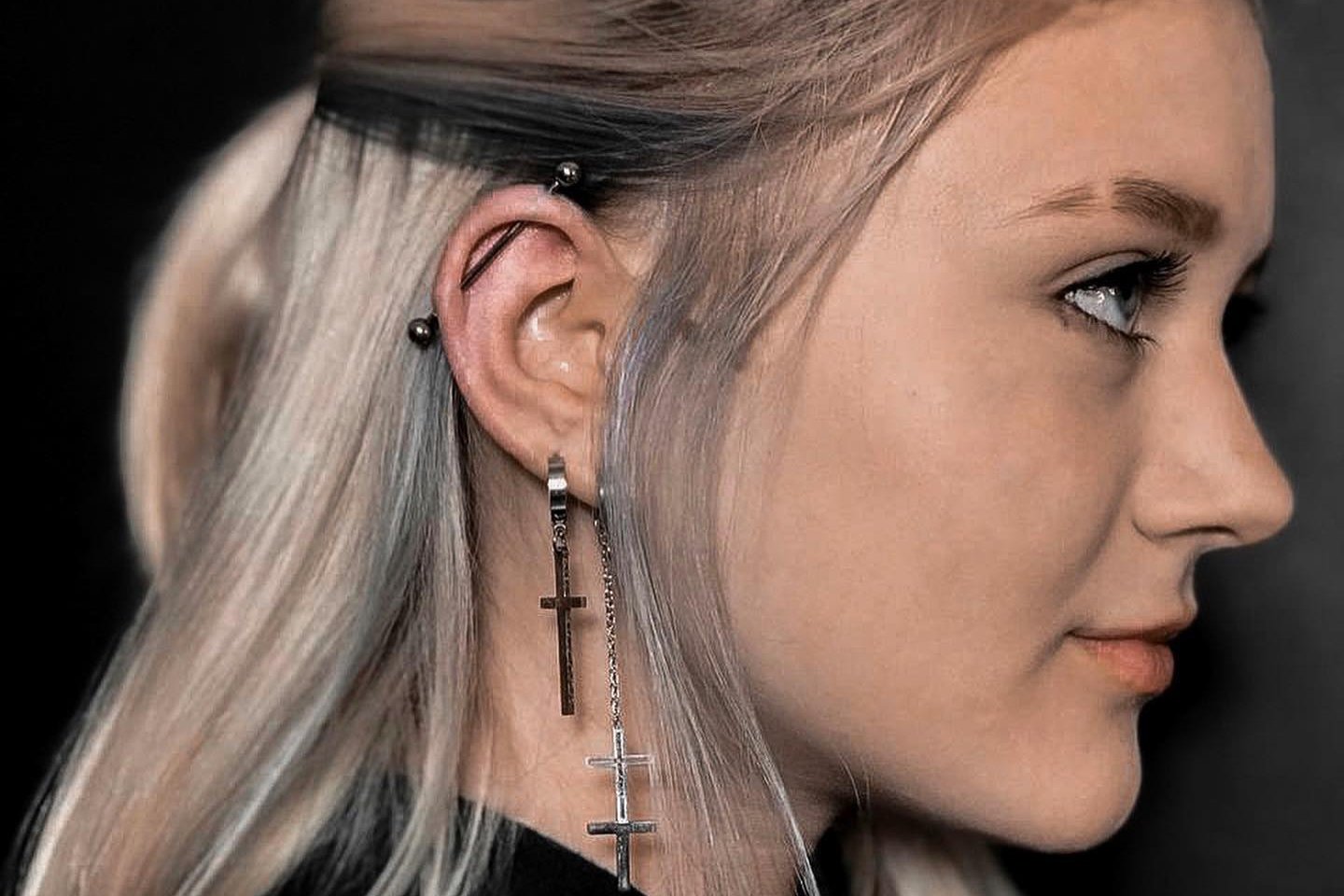
Originality with its
advantages and disadvantages
In addition to the fact that industrial piercing looks very unusual and qualitatively separated between other types of ear piercing, it, moreover, has somewhat less obvious advantages.
For example, you can use different decorations in shape and style, and also due to individual anatomical structures of the ears, the industrial looks different in different people.
But it is worth remembering that cartilages heal a little longer and require more regular aftercare.
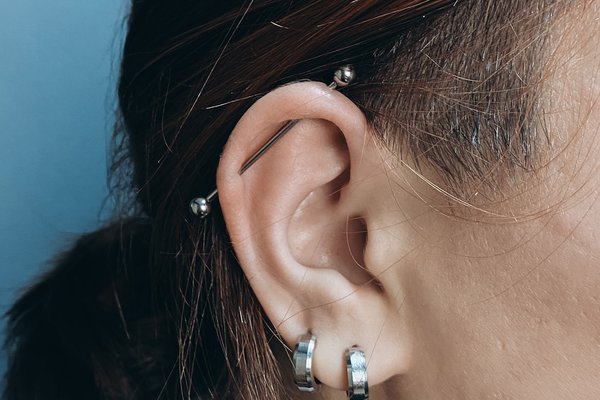
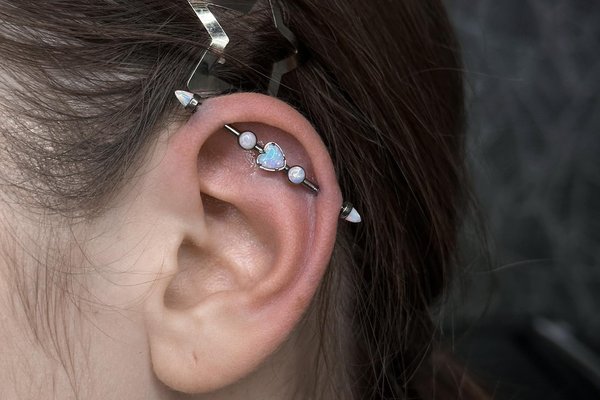
What is the proper
aftercare for industrial piercing?
As we have already mentioned, it is important to properly and qualitatively care for punctures to speed up and facilitate the healing process.
Procedure:
- Wash and disinfect hands;
- Apply the gauze tampon by the antiseptic that was recommended by the master;
- Gently treat the puncture site by removing everything unnecessary, without damaging the tissue;
- Gently move the bar to treat protruding tips on both sides;
- To get the antiseptic agent into the puncture hole, move the bar forward and back gently several times.
All these actions must be performed twice a day, and it is also important to follow the rules of precaution, taking a bath and washing hair.
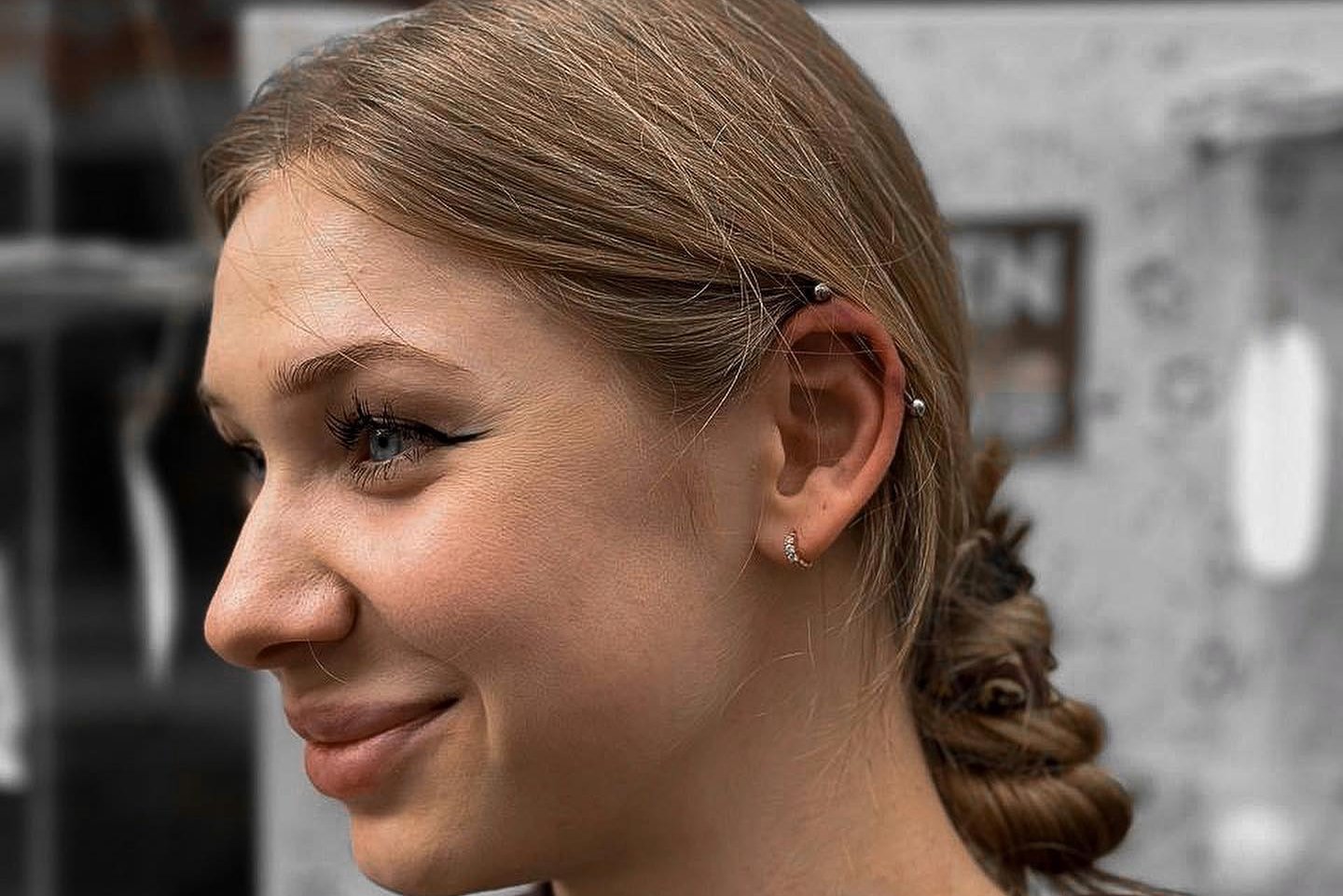
How can I speed up my healing?
Since the natural healing process can last about six months (but not longer than 9-12 months, it all depends on the individual features of the body), it will not significantly accelerate it, but with proper care, you can remove all unpleasant sensations and risks.
For this, remember a few simple rules:
- Hair should not contact the puncture site (they may injure tissue, irritate, contaminate).
- The same applies to the fingers, especially if you have not washed your hands thoroughly before that.
- It is important to avoid as much as possible any pressure: do not sleep on the side where the puncture is, do not use headphones, bandages etc. (it is not desirable to do industrial in winter).
- Start with a tiny and simple jewelry to simplify the aftercare process.
- When choosing a decoration, choose (at least for the first one) the hypoallergenic material.
Minimize the touch of anything to the ear during the healing period, so as not to move the bar, additionally not to injure the ear.

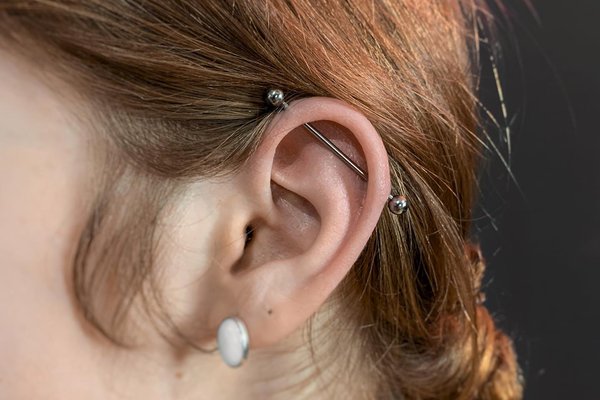
What looks good
with industrial piercing?
We’ve already mentioned that the variety of decorations for industry is really impressive.
Different materials, sizes, designs, trends and stylings. But it is worth considering them all after complete healing, so as not to provoke infection or additional injury premature replacement of the rod. So, from what you can choose your decoration:
- Straight rod, connecting holes. Can be supplemented with balls or charms;
- The shaped rod - curved, which also combines both holes;
- Separate bars;
- Rings for holes.
Decorations can be minimalist or richly decorated - all depends on the preferences of the owner/client. Among the huge choice you can choose options for certain cases and for daily use.
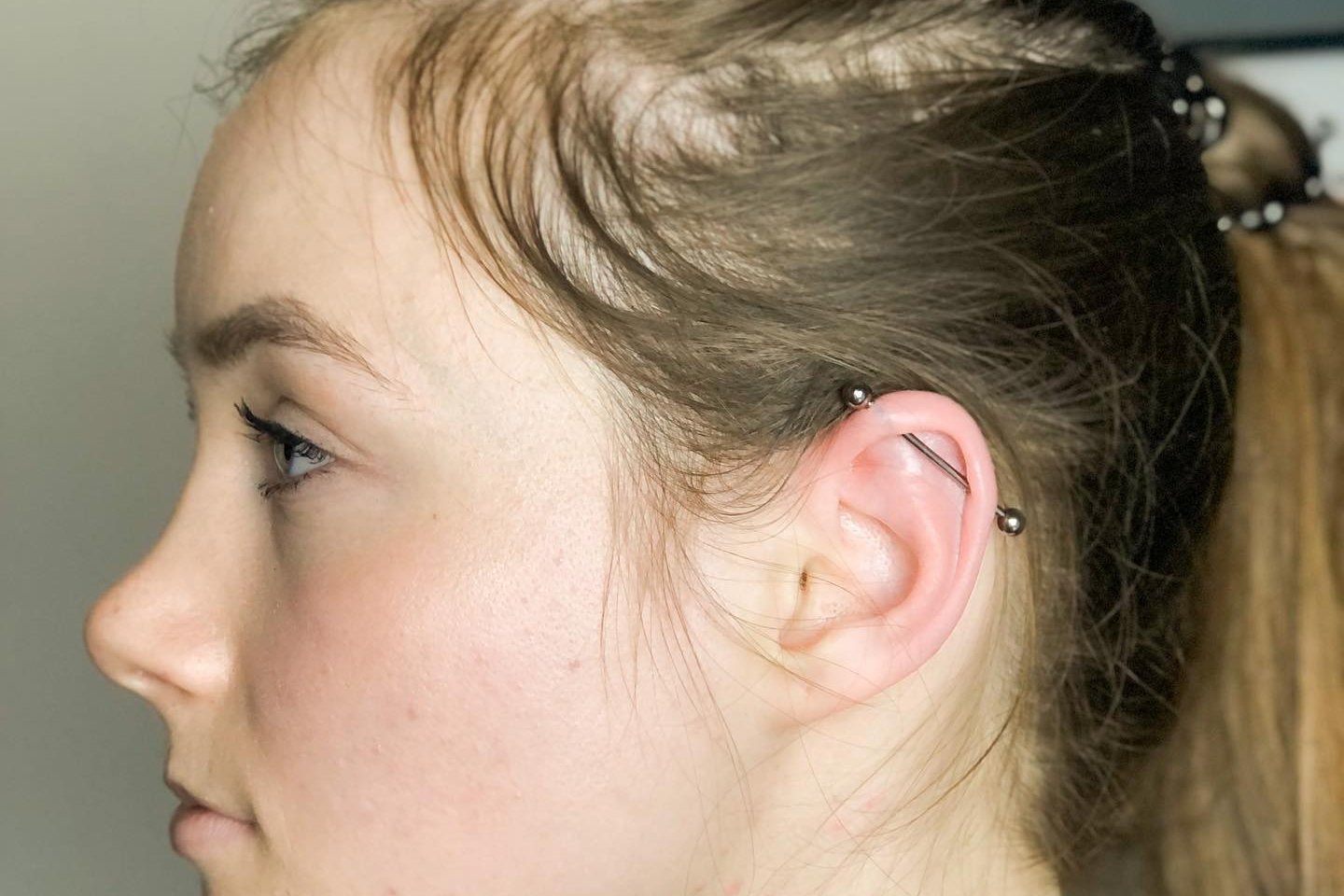
General advice
Masters always advise clients what is best and what not to do, so if this is your first experience of piercing, it is better to start with something simpler.
It is also worth consulting with the piercer, whether to do industrial if you have small ears (sometimes it is not recommended).
If you finally decide to do industrial, get acquainted with the possible risks to which it is important to be prepared and know what to do:
- If the material of the jewelry is incorrect or a person is highly sensitive, rejection is possible;
- Infection - in case of improper or irregular aftercare, as well as in case of non-compliance with all precautionary rules;
- Keloid scars may occur in rare cases in response to cartilage damage.
Therefore, you should strictly adhere to all the prescriptions and advice of the master, reducing the risks to a minimum.
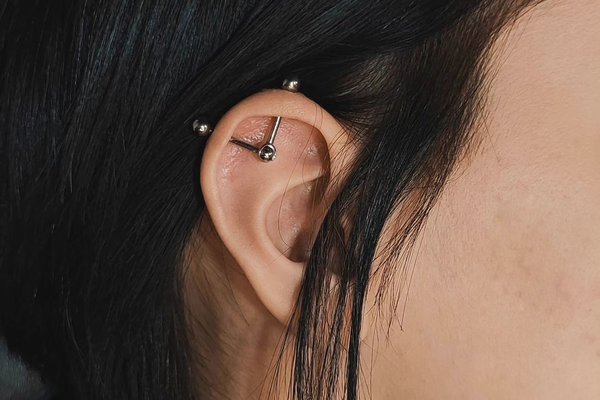
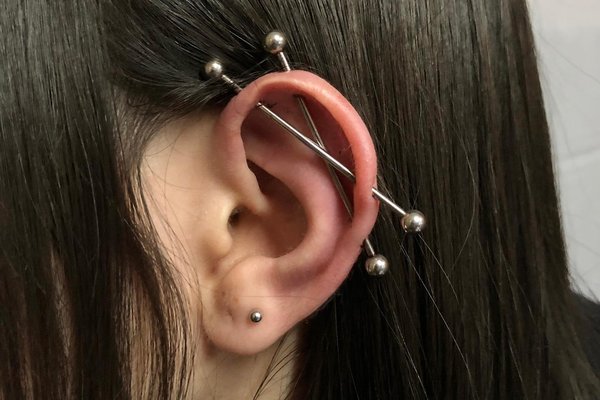
What are variations of the industrial?
There is no limit to fantasy, especially when it is about an experienced client in tandem with an experienced master.
Puncture can be carried out in a different part of your ear, not uncommon are paired parallel punctures (four holes for two parallel rods). It all depends on what piercing you like, what design you want to implement, and also whether you will fit the type of piercing you want.
Therefore, it is important to come to a first consultation, where you and the master will discuss everything and it will make the marking to show where your future puncture will be. In the situation that everything is ok, the procedure takes only 15-30 minutes and does not require long preparation. Therefore, you will be able to carry out the procedure after consultation (of course, if you agree with the master).
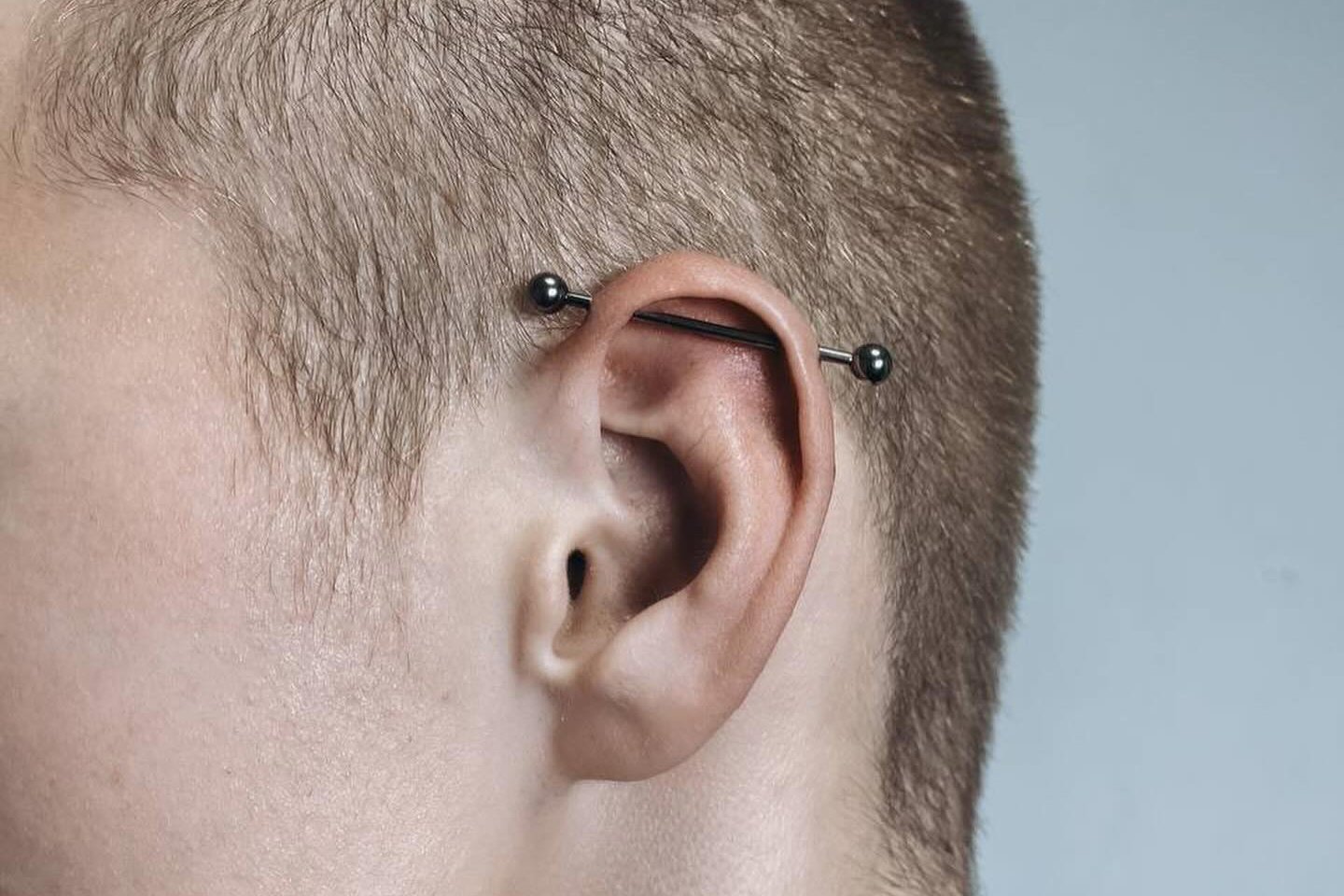


 Make a sketch in the AI VEAN TATTOO generator
Make a sketch in the AI VEAN TATTOO generator




